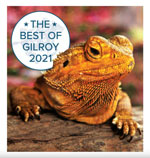Although in recent years tobacco product usage has declined overall, its prevalence remains constant within the LGBTQ+ community—so much so, that it has been woven into queer culture—driving further negative health consequences for this subpopulation.
Why is this still happening? Is this just a fluke? For decades, tobacco companies have preyed on sensitive queer youth who disproportionately experience stress and anxiety; promoting a “fix-all” through using tobacco.
In 2020 for example, a particular cigarette brand sponsored dozens of events at San Francisco’s Pride Parade, which was a blatant attempt to reach and perpetrate LGBTQ+ forums and markets—unfortunately succeeding. For these exact reasons, as we continue to advocate and form policies against Big Tobacco, I believe it is imperative we are being conscientious in addressing sexual and gender minorities concurrently.
The surge in queer substance seeking behavior has been critical for students, as we have been misled into thinking tobacco may relieve our negative thoughts and ideologies. With our rising mental health epidemic in light of COVID-19, these implications become more important as teens are constantly looking for an escape.
Current studies have set the foundation time and time again that queer mental health has been on a decline, leaving us highly impressionable, but widespread initiatives against this have been either slow or stagnant. Big Tobacco’s exploitation of LGBTQ+ communities extends beyond a mere public health concern; it’s a matter of social justice.
It’s time to recognize and confront the intersectionality of these issues, ensuring that our efforts to combat tobacco use are inclusive and responsive to the needs of all marginalized communities.
To me (Richard Do), the subject of mental health and tobacco has become highly relevant, as an LGBTQ student. In seventh grade during quarantine, my sexual orientation had been exposed to my conservative Asian parents who did not accept my identity. I was left in a disoriented state, unsure if I would still live under the same roof or be placed within the foster care system.
The instability of my future amplified with the additional isolation from friends or any support system left me devastated. I couldn’t care less about my health, as everything in that moment felt futile. The one viable option I thought would offer me an ounce of relief was vaping/smoking tobacco. I had thought it would relieve the burdens surrounding my identity, but it only intensified the feeling of losing control in my life.
Though I am fortunate I was able to stop smoking and not become addicted, many are not so lucky. Queer, POC and low-income individuals who similarly face disparities in their lives may believe tobacco is an accessible and plausible way to deal with their issues; leaving them hooked.
Through advocacy, we can push for our respective elected officials to take action. Youth need to use their voices to enable change and educate their peers that using tobacco is not the solution—so we’re no longer a victim of these harmful marketing tactics. By promoting proper mental health coping strategies, I believe we can fight these inequalities, especially for our queer youth.
We know that frequent and recurring exposure to secondhand smoke (SHS) can cause health problems such as asthma, heart disease, lung cancer and stroke. Smoke travels through doorways, cracks in walls, electrical outlets, ventilation systems, and plumbing. Opening windows, using fans, heating, air conditioning and ventilation systems cannot eliminate exposure to SHS.
We support programs like Santa Clara County Office of Education’s Tobacco Use Prevention Education (TUPE). TUPE is a comprehensive evidence-based tobacco use prevention, youth development, intervention and cessation program. The purpose of the TUPE program is to reduce youth tobacco use by helping students make healthy decisions through tobacco-specific educational instruction and activities that build knowledge as well as social skills and youth development assets.
Zach Hilton is a Gilroy City Council member. Richard Do is a junior at Evergreen Valley High School, President of Santa Clara County’s Community Advocate Teens of Today, a research and policy intern at Stanford’s Research and Education to Empower Adolescents and Young Adults to Choose Health (REACH) Lab, and a Youth Advisory Board member at Santa Clara County’s HIV Getting to Zero Program.
















We vilify tobacco but embrace smoking marijuana. Why?